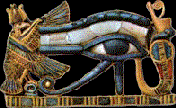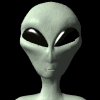 Tonight, 12/31, you can make a try to see what we could not glimpse here last night, but Europeans will have the best chance of seeing - Luna getting ready to take a leap up and join Venus, as seen from the North American latitudes. Scope in on the Southwest. By tomorrow night, from the map you can see how close Luna and Venus will be, such a stunning light in a hopefully cloudless sky best seen over London. They will only be 3 to 4 degrees apart as seen from North America and I'm wishing on a star for a good view here.
Tonight, 12/31, you can make a try to see what we could not glimpse here last night, but Europeans will have the best chance of seeing - Luna getting ready to take a leap up and join Venus, as seen from the North American latitudes. Scope in on the Southwest. By tomorrow night, from the map you can see how close Luna and Venus will be, such a stunning light in a hopefully cloudless sky best seen over London. They will only be 3 to 4 degrees apart as seen from North America and I'm wishing on a star for a good view here.
And look what else is happening in the cosmos 12/31, it's Jupiter and Mercury, only 1/3 degrees apart, down and to the right of Venus and Luna.
Mercury
 Europeans are in the most advantageous place for the best of both events. The Mercury-Jupiter conjunction is c. 14.40 UT and the Venus-Luna conjunction is c. 17.25 UT. So the best time, the "middle of the two" would be to watch at 16.00 UT which is about sunset in London.
Europeans are in the most advantageous place for the best of both events. The Mercury-Jupiter conjunction is c. 14.40 UT and the Venus-Luna conjunction is c. 17.25 UT. So the best time, the "middle of the two" would be to watch at 16.00 UT which is about sunset in London.Jupiter >>>>>>>>>>>>

Before the New Year merrymaking knocks you out cold, take a step into the dark night. Face South. Shining there will be Sirius, the Dog Star, now our Winter Star, at its highest. You'll easily see Orion to its upper right, and Saturn will glow in the low east, off to your left. Look for the star Regulus to your right - you may recall this is the star at the end of the Lion's tail in the constellation Leo.
 Also, the brief Quadrantid meteors may peak around Saturday morning (coldest time of night, coldest time of year - if you want to get a glimpse, dress for it) These are not our beloved Perseids, so don't expect much. But meteor watching in winter is truly an adventure. The best vantage due to its timing would
Also, the brief Quadrantid meteors may peak around Saturday morning (coldest time of night, coldest time of year - if you want to get a glimpse, dress for it) These are not our beloved Perseids, so don't expect much. But meteor watching in winter is truly an adventure. The best vantage due to its timing would  be Pacific time zone, North America.
be Pacific time zone, North America.Luna will be at her biggest and brightest of the year on Friday night. She will be 14% bigger and 30 brighter closest to Earth! Visible throughout the globe, a full moon is always a majestic sight but this will be special because of its proximity to Earth. ( LITTLE AGGRAVATING NOTE: CAN YOU SEE IN THE ABOVE ACTUAL PICTURE OF LUNA THE MUCH-DEBATED SO-CALLED IMAGE OR FACE OF A HUMAN? LOOK CAREFULLY, AND REMEMBER IT WAS FOUND TO BE A MOUNTAIN RIDGE, WHICH CHANGED WITH SHADOW. SEE IT? Whoever sees it first I get to ask any question I want - you may not want to win lol) !!

When Luna's orbit comes closest to Earth it's called a perigee. When it's farthest from the Earth, it's an apogee. Each takes place once a month.
 The uniqueness about Friday's perigee of Luna is that it's the nearest to Earth since 1993. Not only that but according to Griffith Observatory, this event is very special because a perigee and full moon do not occur at the same time. That makes Friday's event extremely rare.
The uniqueness about Friday's perigee of Luna is that it's the nearest to Earth since 1993. Not only that but according to Griffith Observatory, this event is very special because a perigee and full moon do not occur at the same time. That makes Friday's event extremely rare. So get our there and howl!!!
So get our there and howl!!!( I mean gaze .....
=================================
Some basics courtesy of Sky&Tel, Gryphon, Science Today, star charts.
















































7 comments:
City lights makes for poor viewing. But I am going to put my cheapo telescope up and see what is out there!
It would be neat to see that in the sky. I never remember to go look though when things like this come up. The day that the moon was closest to the earth, I wanted to see that so bad and forgot!
(I didn't see the face) I don't have much of an imagination though.
*M*
I would love too be able to see all of these events but we have ice and foggy weather.
Such a shame as you portray it wonderfully in your entry.
Happy New Year to you.
Love
Jeanie xx
Hi Cathy I have just come in after a day out with camera took some great sunsets and then got home took one of the Moon and Venus take a look at my journal later once I get them downloaded later tonight. Love Joan
Oh Cathy I live where particulates warning is on and when you go outside you just see muddy soup up there. When I went to our mountain pasture I thought there a UFO for sure because the moon shone so brightly. I realized I had not seen the moon like that for a long long time. I watched Nova and the history of exploration to Mars and I thought about you. I loved it. It was so magical, all those guys so excited and playing with that finder so expertly. I got to see the white stuff that turned out to be frozen water, but was it ever fluid? And what crippled our twin star? The destiny of Mars. I am going to have to wait on your video for another time, but my curiosity is up, so I will be looking forward to it. Gerry
It would be COOL to see that in the sky.
Excellent entry, fellow Luna lover! Hope I in't miss everything. Will go outsi*e tonight to see if I can see any of this splen*or.
XX
Post a Comment